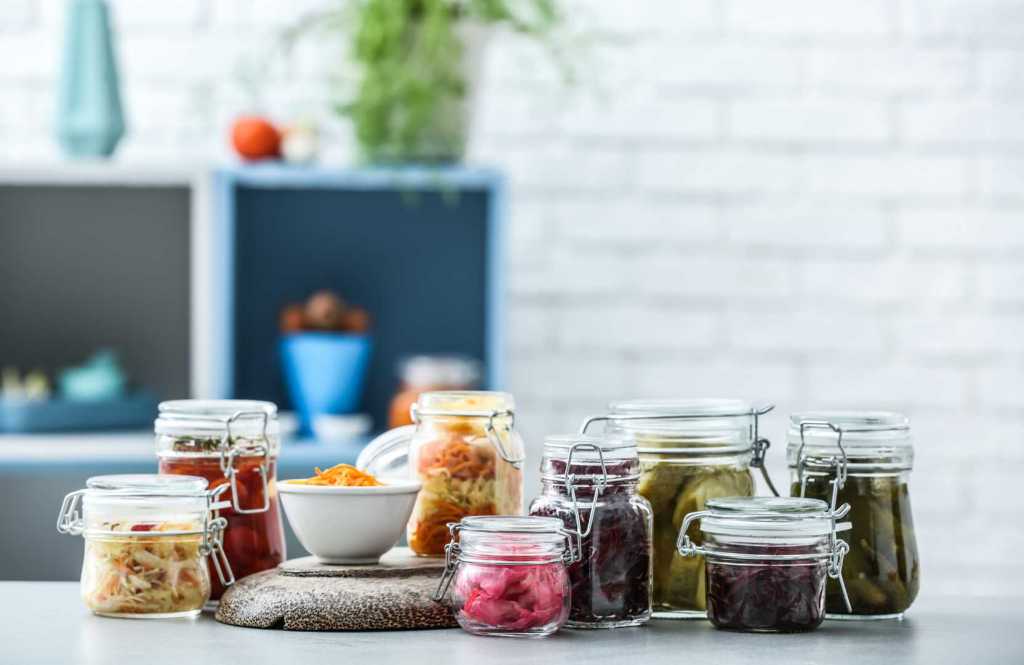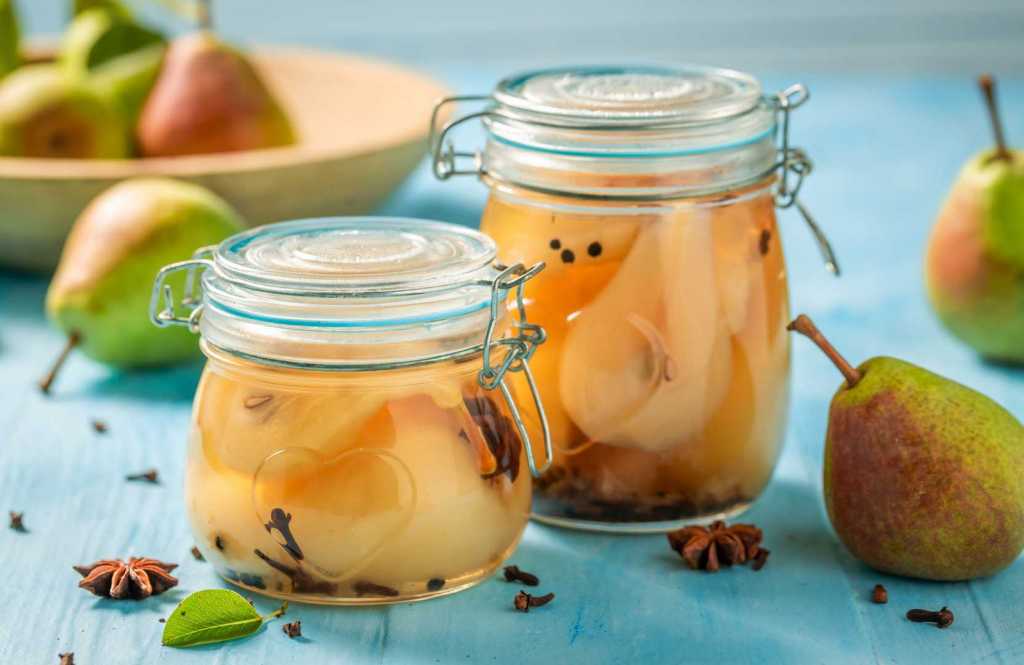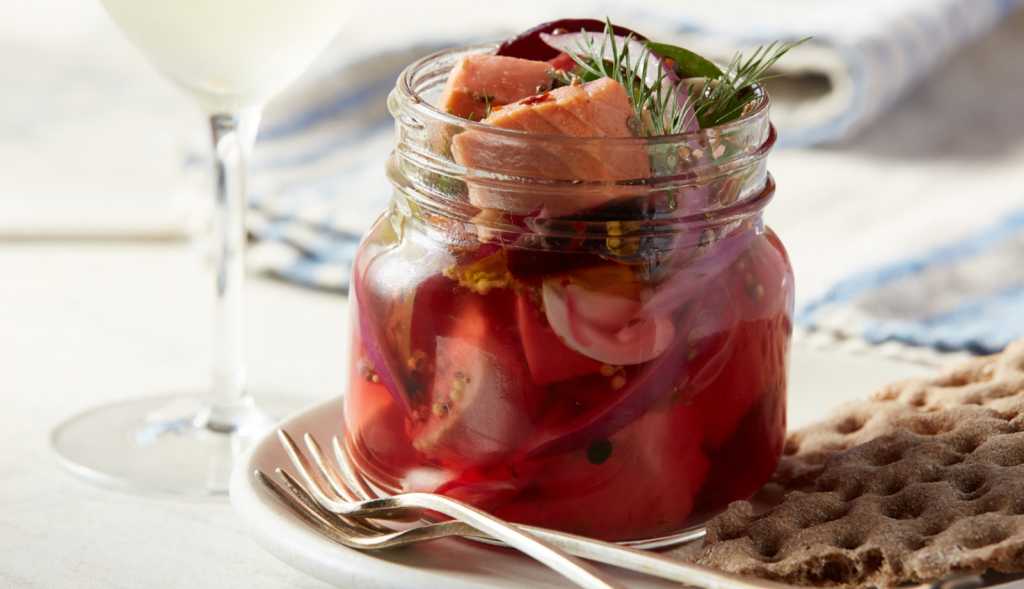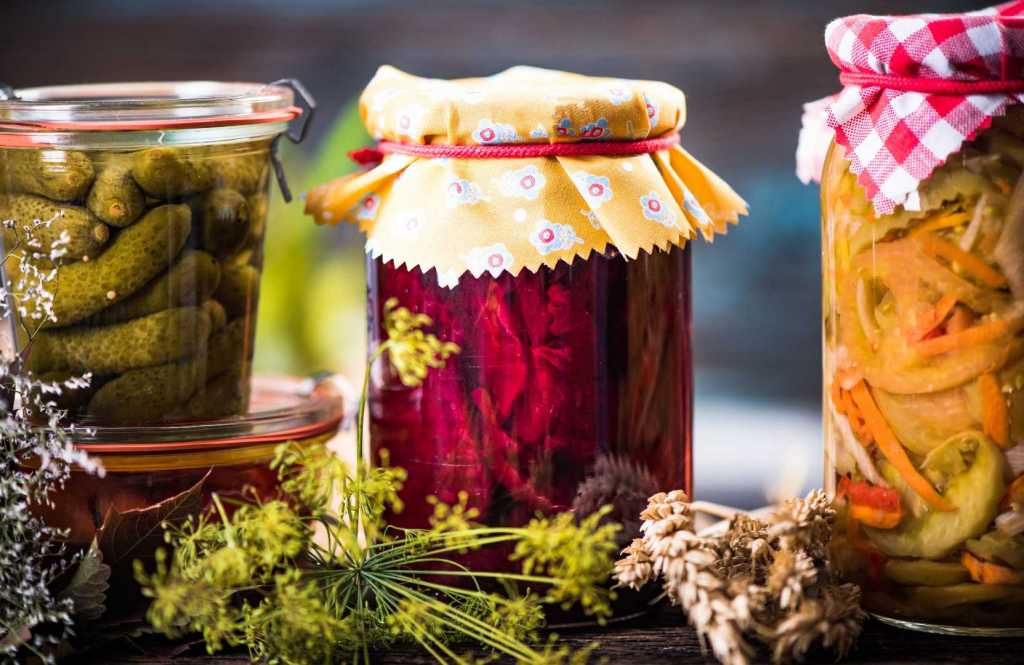Pickling food has multiple benefits. For one, the shelf life of food can be extended for a longer period of time, making it possible to enjoy seasonal foods throughout the year. In terms of culinary experiences, pickling encourages creativity in both the flavor and the texture of the food. It is possible to pickle vegetables and fruit as well as meats and fish. The following tips for pickling focus on the method of vinegar pickling: the simple process of immersing produce into an acidic solution, which is typically vinegar.

Basic Equipment and Ingredients for Pickling
- Mason Jars or jars with lids or stoppers
- Mild vinegar, if possible with an alcohol content of about 6%. It is necessary for the vinegar to have five percent acidity in order for it to act as a preservative. The choice of vinegar is dependent on your preference in regards to the final taste and color of the produce. Common options include distilled white vinegar and white wine vinegar (these options don’t affect the color of most vegetables), as well as the milder flavored cider vinegar (which tends to darken the color of produce).
- Salt, canning or pickling salt is recommended. Avoid reducing salt in fermented pickles since the correct proportions of salt and other ingredients determines a proper fermentation.
- Sugar
- Water
- Spices or herbs, if desired. A cheesecloth bag filled with fresh, whole spices can be placed in the pickling liquid before canning, adding some flavor to the solution.
- Produce, depending on the recipe, you can choose produce ranging from fresh fruits and vegetables to fish and meats.
Simple Steps to Pickling Vegetables with Vinegar

Each pickling recipe has its own unique guidelines depending on the chosen produce and the desired outcome of the pickled dish.
Of the many fermentation techniques, vinegar-based pickling is considered one of the fastest methods. The acetic acid of the vinegar increases the vegetables’ acidity and helps kill off existing microorganisms that cause spoilage.
The following provides a simple guide to pickling vegetables with a vinegar solution.
- Wash vegetables and cut into bite-sized pieces.
- Briefly boil vegetables in salted water, take out and let cool down.
- Boil all ingredients for the vinegar solution according to recipe.
- Layer vegetables in a jar with desired herbs, garlic, or spices.
- Pour the hot vinegar solution over the vegetables in the jar.
- Let it cool and stash the jar in the fridge.
When pickling produce, it is important to note that you must have a minimum, uniform level of acid throughout the mixed product. The use of vinegar with unknown acidity should be avoided. In general, the vinegar, food, and water proportions in a recipe should not be altered.
3 Tasty Pickling Recipes
There are plenty of pickling opportunities and fun recipes that can easily be made at home. The following three recipes highlight different types of produce: Chickpeas, Pears, and Wild Alaska Salmon.

Pickled Chickpeas
Chickpeas are a popular ingredient in an array of dishes and can be enjoyed cooked, toasted, and now, pickled! This tasty recipe combines the sour taste of pickling with flavorful ingredients such as spicy jalapeño pepper, zesty lemon peel, garlic, and spices such as cumin and turmeric. Toss the pickled chickpeas over your favorite salad, use in stews, braised meats and chicken dishes, or combine with other greens as a filling side dish.

Pickled Seckel Pears
Seckel Pears are tiny pears, with a chubby, round body, small neck, and short stem. The smallest of all commercially grown pears, Seckels are exceptionally sweet. So sweet in fact, that the bite-size morsels are sometimes called “sugar pears.” These pickled Seckel pears can be eaten right away, but they’ll continue to become more flavorful with time. According to recipe developer, Brook Hurst Stephens of Learn to Preserve, these lightly-spiced pickled pears are a beautiful addition to a cheese plate, and wonderful with roast meats, especially milder meats like chicken and pork.
Pickled Wild Alaska Salmon with Red Onions and Beets in a Jar
Aside from fruits and vegetables, it is also possible to preserve and enjoy your favorite seafood with the help of pickling. A perfect side dish or appetizer to decorate the table, this beautiful jar combines beets, dill and red onion together with delicious Wild Alaska Salmon.





